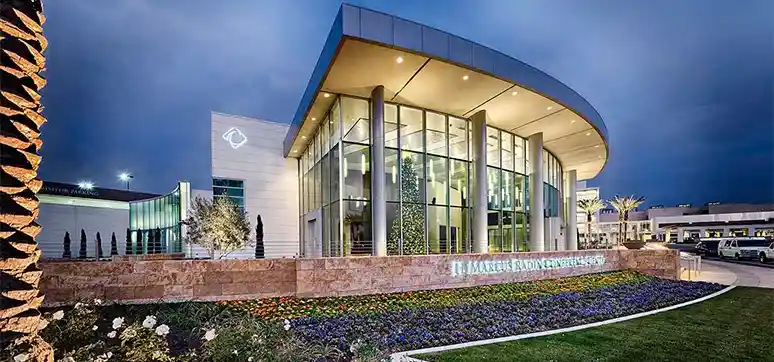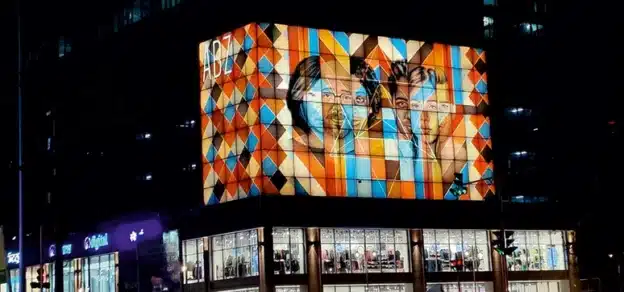With the rapid spread of COVID-19, designs for a world will never be quite the same, especially for large public spaces, like airports, hotels, hospitals, gyms, and offices. This is an opportunity to rethink everything, including how we design and build façades and fenestration to be even more resilient, healthy, beautiful, green and creative. This is our time to come together and not just imagine but ideate and advocate for a future where the world is in harmony with nature, and where innovation and imagination are valued for solutions that enhance the quality of life.

Can we shift from trying to save the bottom line to designing buildings that are carbon neutral because they reduce energy consumption, and participate in regenerating resources while offering ample space in which to live? Here are some fresh ideas by a few experts for the design of resilient façades and fenestration and a brief on the same:
We are seeing that the entire world is getting affected by the spread of this pandemic. Despite the type and scale of spaces, the ground rules of designs will change. This will be felt in existing and proposed buildings, says Anoop Devasia, Lead Architect, PM Group.
COVID-19 has exposed mankind on this planet to a completely new threat. It alarms that the buildings must be prepared for prevention of not only COVID-19 but any virus, in general, that may come up in the future, notes Ashish K Jain, Partner – AEON Integrated Building Design Consultant LLP.

When it comes to façades, it is already established that they are not just a part of the design or just for the show. The façade is as important as the internal spaces. Choosing façade materials depend on various factors – durability, ease of installation, maintenance, cost, resistance to external elements, etc. Health and wellness of the occupants are also added along with this, says Devasia.
According to Deben Moza, Executive Director – Head of Project Management Services, Knight Frank India (Pvt.) Ltd., Covid-19 has certainly created a flurry in the design and construction industry. The conversation has shifted to focus on creating online experiences, deeper integration of technology, and certainly, a change in the fundamental definition of office spaces. “However, what COVID has done is accelerate the pace of these changes which were already happening. We were already moving to a more tech-driven, flexible, touch-free, virtual space – we are now just going faster,” says Moza.
One of the interesting learnings from COVID-19 is something that we already knew – enclosed may not always mean better, states Moza. Can you imagine an open façade, which serves not only to let air in but also as an air filter? Asks Moza. Not only we would get the fresh air, but clean fresh air…
There will be changes in design because the way we use spaces is now changing, says Moza. The definition of work itself is changing, and thus the office space must change. Our common space interactions are changing, and thus spaces will respond. Understanding the exact change today, is quite impossible, as we are yet to see the complete unfolding of this pandemic. At this stage, we can only speculate, observes Moza.
Occupant Wellness – The Prime Concern

Piers MacNaughton, Director of Health Strategy, View Inc. points out that in a post-COVID-19 world, there will be more emphasis on the health and wellness of building occupants. He observes that as a potential outcome of the COVID-19 pandemic, we will see an influx of tools that allow those working from home to interface with those working in the office more smoothly, such as window displays that turn virtually every surface of an office building into a screen.
Façades will increasingly be designed with smart glass that intelligently changes its tint based on cloud coverage and the angle of the sun, says MacNaughton. This high performance technology-based on a cutting-edge electrochromic coating – blocks heat and glare without blinds and shades while optimising comfort levels for people and giving them access to daylight and views of the outdoors.
Public buildings receiving and serving large populations like airports, hospitals, hotels, workplaces, etc., have the largest risk as the people coming and moving out of these buildings become potential carriers for the travel of the virus.

As per recent studies, it is found that particulate matter and other pollutants can also become a potential carrier for viruses.
Façades, being the frontier of buildings, shall be an even more crucial element to design. Key factors in façade design to mitigate health issues will include the prevention of dust, pollution and particulate matter entering the building, says Jain.
Architecture, especially large public spaces will see a paradigm shift or correction to the design approach we have taken for the last 3 to 4 decades, agrees Ajay Gupta, Executive Director, KGD – A Katerra Design Partner.
The building design will become a reflection of nature, and the environment outside rather than creating an artificial human comfort level environment inside which is alien to the actual surrounding of that space. The buildings will breathe in and out and manage human comfort with a passive approach. The façade and fenestration will also start to show a reflection of this, it will change from being a barrier to be a filtered skin where light, heat and air can flow across with a purpose and complement the environment inside.

According to Titir Dey, Design Director, Space Matrix, from an indoor environment perspective, the wellness of a building’s occupants depends upon factors like indoor air quality, space, thermal and physical comfort.
There is thus a need for a sustainable design approach that focuses on the integration of natural light as much as possible. While designing the façade, materiality and style play a crucial role in determining how much natural light will enter the area. Glare control and balancing thermal factors through mechanical systems are essential to ensure a comfortable indoor environment.
In the current scenario, there has been a lot of research on surfaces and metals with superior antimicrobial properties. Designers must consciously focus on such options, especially for high touch-prone areas.
Devasia too agrees with Gupta and Dey, adding that the way façades impact internal temperature is one of the major criteria while evaluating the façades. Looking at the quality of air outside, façades that can improve the air quality will be a promising one.
Importance Of Façade Design For Occupant Wellness

Wellness is the word used when the environment around you compliments your physical and mental well-being, says Gupta. The façade design will play the key factor to integrate the internal to the external with the right mix of elements being transferred and filtered to the internal space. An average person spends 80 to 90% of the time within a building, be it an office, home or shopping area. This indicates the importance of designing façades as it can have a long-term impact on the occupant, adds Devasia. The façade is part of the building’s interior as well as exterior, which makes a building façade much more than a simple protection layer from external elements. Façades should become the skin of the building, not a container.
According to Moza, the façade does more than set a tone for a building. It is an interface between the inside and the outside of a building, serving a protective and regulatory. More obviously, comfort factors like heat and noise transmission and visual privacy, and human performance factors like access to natural light and fresh air, are largely dependent on the façade. However, more intangible factors, like user control for instance – the ability to open a window near your desk – significantly impact user stress levels. We see an increasingly active role of kinetic, bioinspired, and technologically supported façades in controlling the interior microclimate and supporting building function.
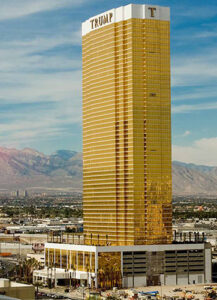
MacNaughton too observes that as the skin of the building, the façade plays an important role in regulating occupant health and wellness. Scientists have known for decades that increased daylight and views of the outdoors can regulate circadian rhythm, lower blood pressure, and even positively impact our ability to learn. The evidence regarding daylight’s positive impact on sleep and health is encouraging, notes MacNaughton.
A recent study found that people who worked in an office with smart windows slept 37 minutes more each night. The participants were also 48 per cent less likely to report eyestrain and 77 per cent less likely to report feeling depressed in the room with better daylight and views of the outdoors. Also, the participants’ cognitive function improved dramatically, resulting in a 42 per cent average increase in test scores compared to when they worked in an office with the blinds. These are groundbreaking findings and quantitatively demonstrate that the quality of façade design with smart windows has a profound impact on occupant’s health and business performance.
Light, air, and heat have a significant impact on human health and wellness, and façades have the potential of either enhancing or ruining these aspects for occupants, if not designed carefully, stresses Jain. The façade brings in daylight and allows people to have access to outdoor views – directly related to the visual comfort of occupants. Whereas, too much daylight, glare and heat ingress through the façade affects both the visual as well as thermal comfort of the occupants. In naturally ventilated buildings, façade design is even more important as it serves as the means of bringing in the air and ventilating the building.
Façade Design – Form, Space & Materiality

Occupant wellness is vital not only inside but also outside the buildings, says Jain. While adequate wind flows around the building are important for outdoor comfort, airflow inside the building is important for indoor ventilation. An integrated design including space planning, building orientation, form and shape coupled with an efficient façade design with optimum glazed and operable areas can potentially help to achieve the goals of occupant wellness without compromising on building’s operational efficiency.
Let’s look at what are the elements a façade is trying to control – Mainly elements like light, air, water & noise. How daylight is treated by the façade will have an impact on the quality of space inside, thus help to improve the concentration, creativity, and productivity of the inmates, says Devasia. “Air is an integral part of us. We need breathing façades which can create well-ventilated spaces that will help positively for the people living within those façades.
Water is an element that can improve the mood of occupants depends on space utility. Similarly, controlling environmental noise & sound transmission is very important, mainly in cities where people are not privileged to get a quiet environment. This can help to reduce the stress levels of the occupants. How a designer is transforming all these aspects into a façade design, and the materials the designer is choosing will define the occupant wellness.
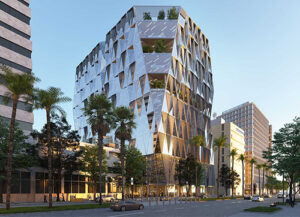
Moza opines that the most basic answer to effective façade design lies in learning from vernacular architecture. The façade must not be looked at as a box that enclosed the building and creates a sterile, context-independent aesthetic. It must be climate-responsive at the least, and perhaps even a dynamic part of building systems that aid in energy generation or air purification. This requires us to move away from looking at only glass and steel and panels, and explore the plethora of innovations in the industry, from the pixel façade to smog neutralising façades, water-cooled façades, and even kinetic, technologically controlled façades, suggests Moza.
According to MacNaughton, building façades with traditional glass windows have no control on the amount of daylight that enters the building, leading to glare when the sun is on the façade and relative darkness when it is not. We can only spend so much time near them before we start to feel uncomfortable (common symptoms are headaches, drowsiness and eyestrain).
So far, many solutions to this problem have been clumsy and low-tech, says MacNaughton: “We’ve covered windows with blinds and shades. The problem is, neither of these is very good at reducing heat and, perhaps more important, they block natural light and views of the outdoors – both of which are not only desirable amenities but critical determinants of our health and wellness. Smart glass solves these problems by maximising daylight into space while effectively eliminating glare and reducing thermal loads”.
Awareness Of Façade & Fenestration Design & Construction Strategies
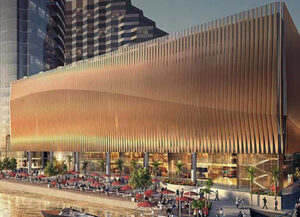
In the latest version, LEED v4.1 and other building codes the aim is to ensure that a building is resilient from natural and unnatural disturbances with a comprehensive set of design and construction strategies. Are you aware of this? How can these amendments raise the bar on building standards to address the present situation like the pandemic?
In the past, we thought of our workplaces as just that: places to work. We didn’t consider how they were affecting our health. We (in America) spend, on average, more than 90 per cent of their time indoors, says MacNaughton. “Over the last 50 years, we’ve replaced the sun’s light with artificial bulbs, fresh air with HVAC, and the sound of the natural world with humming screens. We’ve created a new human environment, and it’s making us sick,” he adds. Certification organisations and local building codes are slowly factoring occupant wellness into their standards.
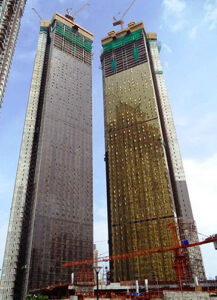
In addition to helping building owners meet more stringent energy requirements and obtain additional credits through LEED by reducing building energy consumption, products like View Smart Windows position organisations to benefit from new iterations of the standards that factor in health and wellness, says MacNaughton. More and more developers refurbishing old buildings are choosing to install smart glass. Such smart products also help developers achieve their LEED certification goals by earning points in different LEED categories, observes MacNaughton.
Moza explains, Green ratings, such as LEED as very widely known, and primarily aim to help to build be more environmentally responsible. To understand building interaction with its users, there are certifications like the Wellness Certification, which integrate with LEED to provide a more holistic picture of the built environment. “This is great, but unfortunately, these are discretionary in the application. Our best bet at the moment is approaching the built environment with relevant and mindful use of the material and an eye towards occupant wellness, which can certainly help create safer common-use spaces,” adds Moza.
According to Devasia of PM Group, the latest version is intended to raise the bar on building standards to address energy efficiency, water conservation, site selection, material selection, daylighting and waste reduction. This keeps the human being on the priority and focuses on material selection, human comfort, air quality and health features of a building.
“I think while designing a campus (residential/ commercial), one needs to ensure that the health and wellness of the occupants shall be one of the criteria. We need to start thinking and implementing ideas like urban farming, urban gardening, etc., in addition to promoting fitness, and community inclusion in our projects,” says Devasia.
Available Guidelines & Rating Systems
With the success of the Green building movement witnessed in the country during the last two decades, there is absolutely no doubt that introduction of wellness and resiliency aspects in rating systems will direct the thoughts and raise the bar of building aspirations. While Green Building Rating systems are now covering wellness and resiliency aspects, there are special rating systems also being formulated and available covering these aspects. Some of the available Guidelines and Rating Systems available include,
- “Measuring Resilience Guide” for LEED v4.1 Cities and Communities
- “Design for Enhanced Resilience” Pilot Credit under LEED v4.1 BD+C
- “RELi 2.0” Rating Guidelines for Resilient Design + Construction by United States Green Building Council
- “The WELL Health-Safety Rating” by International WELL Building Institute
- “IGBC Guidelines Combating COVID-19” in Green Buildings by Indian Green Building Council
Subsequent to Green building, wellness concepts and rating has already sparked the industry and generated tremendous interest in the building community. Going forward, it is the ‘resilience’ that is likely to gain attention from the industry to address and implement these concepts in a built environment.
(Ashish K Jain, Partner – AEON Integrated Building Design Consultant LLP)
The ‘New Normals’ Concerning Sustainable Designs For Homes & Offices
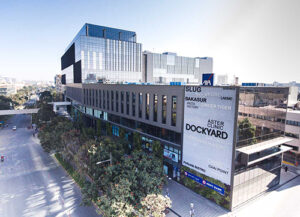
As we move forward in the different phases of the pandemic, new configurations and new plans are starting to emerge. The quality and comfort of our homes will become at the top of the list. What would be the ‘new normal’ concerning sustainable designs for homes and offices, putting wellness at the heart of building design? Gupta says the new normal will be common sense-based ideology, nothing too complicated, nothing too complex, and simple design ideas will prevail. Elements like fresh and clean air, good and bright sunlight, and natural greenery to filter light and air will become the norm. Artificial means of creating comfort will take a back seat.
According to Titir Dey, as people transit to the ‘new normal’ and start stepping out of their homes, they need to feel secure, valued and trusted. The focus must be on instilling a feeling of safety by making changes in culture, behaviour and materiality. There must be a sustainable approach that considers the wellness of the occupants, and technology to usher in this change as well as management of the indoor environment. Whether it is a home or an office, the success of the design will be determined by the extent of physical and functional comfort provided to the occupants.
Agreeing with Dey, MacNaughton says, it is time to talk about the building as a whole; not to just talk about the different components like windows. In his opinion, the “new normal” concerning sustainable designs for offices would be to consider a 360-degree wellness profile of the building. Not only will occupants desire daylight and views, they will also look to their companies and building operators to monitor environmental conditions and ensure a healthy environment. He adds that the coronavirus may end up kick-starting an architectural revolution – where buildings are designed from the ground up, with the health, wellness, and productivity of the people who live and work in them in mind.

Moza points out, “For the first time since the emergence of the open office, we are seeing a shift from user density and aesthetics to occupant wellness and psychological safety. As the new normal in workspaces, we may start seeing a deeper integration of technology – starting from the simple ones, like virtual collaboration spaces and thermal scanners to more robust building occupancy mapping and scheduling systems”. The key here may be design resilience – the ability to adopt these changes, adds Moza. Regarding home spaces, which are now blending with workspaces, we are already seeing a return to our roots in terms of cleanliness and sanitisation.
It would not be surprising if newly built homes were to feature a “sanitisation station” before the main entry – or simply a washroom, an element seen back in the days of the haveli or traditional residences! The new normal of the immediate future will be social distancing, more frequent cleaning, limiting exposure to high-touch surfaces and switching to antimicrobial surfaces where possible, says Devasia. On the drawing board, many of the “Nice to have “will become “Must have”.
Over time there will be a different pattern of work. There will be a shift in how to manage resources. Corporate giants are seriously thinking of increasing the percentage of Work-from-home arrangements for employees. This means the footfall inside an office will reduce, which will eventually reduce the number of workstations, sizes of meeting rooms, etc. During the pandemic, work from home swiftly got converted from a “New Norm” to a “New Normal”, observes Jain. While WFH has changed the lifestyle of many people and their families; quality, comfort and efficiency in homes have taken the front seat. With increased time spent in homes during the pandemic, people’s perspective of how to use their homes is certainly altered. Achieving comfort and a conducive environment for living as well as working is a new balance to be achieved in homes.
Home is no longer just a home, it is serving an additional usage of the workplace for adults, learning space for children and recreational space for all. Because of the multi-functional approach and comparatively safer environment at home, Jain believes that wellness at home will relate more to:
- better space utilisation
- ergonomics
- acoustic & sound management
- thermal comfort
- visual comfort
Post-pandemic, our homes are serving as a space for full-time work, gym, schooling, etc., in addition to sleeping, eating and other leisure activities. We not only want them to be beautiful but also healthy. The demand for biophilic design will continue to flourish in the future. More green areas and gardens, exploitable rooftops, natural light and ventilation, balconies, and terraces, minimal and wholesome indoor environments, transitional and filtered entrances, etc. could become potential changes.
Performance Enhancement
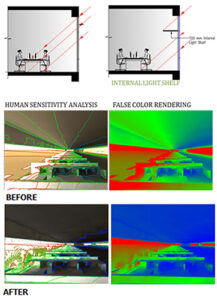
Performance enhancement is more likely to come from a different set of building features and attributes that affect performance, says Jain. Lighting that produces glare or visual discomfort is more likely to be associated with headaches and eye problems. Glare due to direct solar penetration and the lack of luminous uniformity across space distorts the perception of good indoor daylighting.
As per a field study of office workers, it is found that workers who had window views of nature felt less frustrated and more patient, and reported more overall life satisfaction and better health than workers who did not have visual access to the outdoors or whose view consisted of built elements only. The positive effects of nature may also extend to the immune system, thereby directly affecting human physical health. Thereby, one of the perennial challenges in designing façades is to achieve an even distribution of diffused daylight across the building section.
Use of Computer Simulations for Façade Optimisation To achieve optimised façade design for energy efficiency, cost efficiency and occupant comfort perspective, there are specialised computer simulations conducted viz. Wind CFD Analysis, Solar & Daylight Analysis, Glare & Visual Comfort Analysis, Natural Ventilation Analysis, etc.
These computer simulations conducted at different stages of the projects help optimise the building designs to enhance performance and achieve comfort at the same time. The simulations are aimed to evaluate building designs for identifying potential concerns and providing solutions to ensure appropriate façade design by identifying the most feasible and cost-effective options for the project. The quantified results help owners, architects and engineers to make informed design decisions.
(Ashish K Jain, Partner – AEON Integrated Building Design Consultant LLP.)
Designing Carbon-Neutral Buildings To Save The Bottom Line
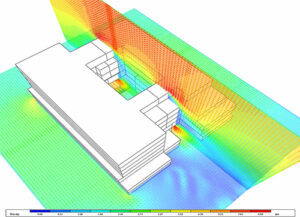
The adverse impact of not designing buildings sustainably has been faced for decades throughout the world, denotes Jain. Much of the natural disturbances and calamities are somewhere linked to the environmental disbalance created by not having an environment-friendly built environment. We have even witnessed the impact of CFC emissions leading to the depletion of the ozone layer. Deforestation is causing another set of problems of seasonal imbalances. Recent news on the trail of earthquakes moving around different parts of the world is also a sign of such imbalance.
Earth is composed of a certain proportion of water and land which is disturbed due to rising sea levels on account of CO2 emissions and global warming. With an increase in the water on the earth’s surface, plate tectonics of the earth are disturbed, causing a trail of earthquakes around different parts of the world. While the concepts of Carbon neutrality, energy use reduction, water use reduction, and green buildings are linked to the businesses’ bottom line; these have a much greater role and impact on human life.
Thereby, says Jain, we don’t have a choice but to find solutions to address both environmental and occupant health issues in our built environment in an integrated way. The shift to Carbon-neutral building begins with making conscious choices during the design process, observes Dey. From the perspective of interior architecture, factors such as conscious zoning and space planning, using the right materials, integrating the best-fit tools and technologies, etc., will help us achieve energy efficiency and sustainability goals.
Small, but effective changes can make a sizeable impact on the carbon footprint and power consumption. In times like the ongoing pandemic, the use of locally available materials and products can bring down the carbon footprint and also help in avoiding delays caused by a disruption in transportation. According to MacNaughton, innovation can drive the type of human progress, transforming buildings to improve occupant health and wellbeing, reduce energy consumption, and increase revenue, where we don’t have to pick between people, planet, and profit.
Shifting from saving bottom lines need not necessarily exclude the creation of sustainable buildings, says Moza. It is a matter of where the CapEx is being spent. What is more important, is a shift in the design mindset – for instance, rather than aiming to create a glass box that just looks good and which would take several hundred tons of air conditioning to cool on each floor, we should aim at creating a building that works in the climate context. Climate-responsive architecture is not new.
Add a layer of technology to it, and we can easily see intelligent, self-sustaining, energy-independent, off the grid buildings that add value to the environment around them. With increasing numbers of countries, states, cities and organisations committing to carbon neutrality, zero-carbon buildings are finally getting the attention they deserve as a critical climate solution. Let’s hope that the building industry will be more focussed on achieving this, remarks Devasia.
Role Of Façades & Fenestration In Achieving Carbon-Neutral Buildings

The façade of a building is the largest surface area available which can well be put to use for a variety of purposes aside from creating a visual landmark, notes Moza. It can help in energy generation, by having solar panels built into it, or ambient cooling and air purification by having vertical greens. It can help control the microclimate outside the building as much as the inside. There is a myriad of solutions available even today, and these must be incorporated as the norm rather than exceptions in building design and construction.
Designing a high-performance building envelope is a must to achieve a carbon-neutral building. Smart façades (building envelope that adapts to the environmental condition) which are energy producing, light-responsive, and operable skin can be used to achieve this goal, observes Devasia.
Changes In The Design Of Public Buildings Post Covid
Right from the outset of the pandemic, there is a need for a cultural and behavioural shift. In the initial stage, this change will require a lot of communication and high-impact messaging serving as constant reminders of the ‘new normal’, Dey points out. For instance, public places will see a lot of signage and floor markings, etc., being put up to guide people on social distancing protocols, movement directions and usage patterns, etc. Over the longer term, people would start inculcating new norms as habits and the change would become integral to common behaviour in public places. Future building designs will be governed by the principles of zoning and a much higher focus on controlling circulation as well as the management of human density at all critical points.
Flexibility will be the other major element enabling organisations to change their patterns and layouts on the go, adds Dey. MacNaughton expects our buildings and public spaces to get better and better during and post-pandemic. As painful as recessions may be for individuals, they often lead to brilliant works of architecture. The theory goes like this: When the economy is good and businesses are hiring, developers erect buildings as quickly as they can to meet the demand.
There is a virtual guarantee that developers will be able to lease these buildings – and fast. In an economic downturn – like the one brought on by the pandemic – that guarantee is gone. For buildings to lease quickly, they need to stand out against the competition. They need to be built with exceptional quality. Confidence in public spaces has eroded during the pandemic. For people to return, they need to feel comfortable that they will be safe in the proximity of strangers, points out MacNaughton.
In a recent survey conducted by Gensler and View, just 20% of travellers said they were currently comfortable travelling. With increased confidence in the airport, that number increases to 50% in October of 2020, but without confidence, passengers won’t reach the 50% milestone until April of 2021. Drivers of confidence, such as continuous environmental monitoring, real-time display of environmental conditions, and touchless technology, can help bring people back to public spaces 6-8 months earlier.
Moza too insists to rely on user behaviour, as we all will be learning the new way to interact in social spaces. In terms of design, public spaces will likely show an increase in passive environmental interventions – for instance using flora or screens to separate circulation. Transit spaces, like bus stops and railway stations, may as well start looking like airports, which were designed to be more open and flexible and thus can accommodate physical distancing. Community spaces and restaurants will probably require much more control of the occupants. We are already seeing pods and screens pop up. However, we must all be aware that the information flowing in about this pandemic changes every day, and as such, these are merely speculations, and only time and trial and error will show us which interventions work, observes Moza.

All public places will have a high density of people, but better people flow management, and segregation of different zones concerning people and services like HVAC, etc., will become the norm. Technology will play a big role in decentralised non-critical activities in these areas, agrees Gupta.
Devasia too agrees that post-pandemic, social distancing will potentially become one of the design considerations. “In my view, the first to change is the “Sq. Ft per person” calculation. A bus stop that was previously designed for 10 people can now accommodate only half of them. This will have a cascading effect on entire space designs. Entry/waiting areas, corridors, passenger concourse, restrooms, etc. This will also mean either the capacity to be reduced or the Built-up Area has to increase,” adds Devasia.
According to Jain, public buildings being the highest potential of risk are going to be employing several measures to fight and prevent issues like Coronavirus. Key factors will include the following:
a) Architectural design such that space planning facilitates social distancing when desired
b) Interior design such that touch surfaces are minimised and are employed with sensor-based technologies like self-closing doors, wherever feasible
c) Main entrances are designed to accommodate vestibules for creating buffer zones and preventing dust and pollutants to enter the building
d) Façade design such that it has no leaks and adequate openings for natural ventilation
e) HVAC systems design such that it provides treated fresh air and controls pollutants like ‘particulate matter
f) Toilets to be designed to have touchless faucets, soap dispensers, hand dryers, etc.
g) Provision of sanitisation facilities
h) Public buildings like airports and railway stations shall employ more digital technologies for ticketing and boarding passes
The Need For Modular Constructions & Adaptive Reuse
Modular construction systems and adaptive reuse of buildings/spaces (the process of using existing structures to serve new purposes) have become popular in the recent past. According to Dey, this is a rapidly changing scenario, and people are looking for multiple options in every area. One of the main approaches towards modular constructions will be the focus on adaptability and user flexibility.
Focus on adopting a modular approach while planning as well as during construction in sync with the adaptive usage trends is highly beneficial and offers flexibility, scalability, faster construction and a greater ability to change the usage pattern as per the need, says Dey. The pandemic has underscored the need for dynamic adaptability in accordance with the prevalent situation. This adaptability is ensured by a modular and agile approach.
Moza advice on investing in adaptive reuse. On a city-wide scale, adaptive reuse is a great idea to protect our cultural heritage and avoid land wastage. On a smaller, organisational level, this may just be the solution to creating a flexible real estate strategy that can meet the changing organisational strategies. According to Gupta, flexibility in design will be the key to success, no building is ‘future-ready’ but all buildings should be ready to change in the future, this mantra will take us ahead to a glorious future.
The number of corporate clients who are asking for a flexible building plan, which can remodel, rearrange depends on the business needs are increasing, agrees Devasia. “I feel post-pandemic requirement for a flexible workspace will further increase. Using modular construction can help this. When it comes to interiors we have demountable partitions, workstations all available in the market and the client can be choosier,” he adds.
Innovations In Lightweight Architecture & Flexible Designs – Need Of The Hour
From an interior space design perspective, there is a humongous opportunity for light-weight and flexible designs, says Dey. People prefer these concepts as they offer multiple choices. Today, the preference is to have options in everything, including the way people want to work or use the space for other purposes. When we provide people with the option to customise their space and boundaries as per their preferences and tastes, there is a lot of user satisfaction. Designs should be future-focused, integrating emerging concepts into office and home-office designs wherever possible, adds Dey.

Devasia too agrees that lightweight architecture or lightweight enclosures are the need of the hour. This is an area that is not much explored by the designers. This can have mass usages in public places. The lightweight character will help this to be installed in literally anywhere. MacNaughton adds that the emerging technologies like the machine-learning software required to control natural light and heat also makes the entire skin of a building digital and intelligent, allowing it to be easily updated to gain new capabilities, effectively future-proofing the building. Besides, with such smart products, one can seat occupants right up to the window without having glare or temperature issues. This extra floor space enables you to be more flexible with space usage, both in the core and perimeter of the building.
If Covid-19 has taught our industry anything, it is that architects alone cannot save the world. Technology is our best friend, agrees Moza. He advocates complete wellness at work, and this concept includes comprehensive building information systems, responsible material choices, reconfigurable furniture, and tailored workspace designs. “Today, we have ramped up our efforts to educating our clients about wellness in design and creating spaces that support employee engagement and productivity. With our global network, we are keeping abreast of several innovations that can be incorporated into our daily lives. We are also advising our clients on their real estate portfolios, including re-occupancy of spaces, the changing meaning of work, and strategies to approach it in the future,” concludes Moza.
CONCLUSION
In recent months, we have arrived at a new juncture of disease and architecture, where fear of contamination again controls what kinds of spaces we want to be in. The Coronavirus pandemic has brought a lot of amendments to building designs. Its impact on global wellness has forced to flex and evolve, both in real-time and in the long-term. Confronting the limits of their own home has made architects rethink how they approach designing spaces for clients.
As the world is slowly reopening, easing lockdown measures, everyone is adapting to new realities. Imposing drastic adjustments to our lives, the coronavirus has introduced a new “normal”, changing our perceptions and altering our priorities. Driven towards questioning and evaluating our environment, we are constantly reacting and anticipating a relatively unknown future. While we cannot foresee the future, we can create logical analogies that are based on the current situation and our first responses. Architects around the world have put their knowledge to use in the fight against the Coronavirus and have created innovative solutions that might stick around for a while.
Emergency architecture and crisis architecture are topics that will start taking centre stage as the world changes. Responsive and adaptive reuse approaches are becoming vital in our emergency responses, allowing for rapid action in the age of the pandemic. As Ar. Joel Sanders, professor at the Yale School of Architecture and Principal Architect at Joel Sanders Architect says, “Architecture has to mediate between the perceived needs of the moment versus the unknowable needs of the future; between the immediate needs of our bodies and the desire to create something that will outlast generations”.
